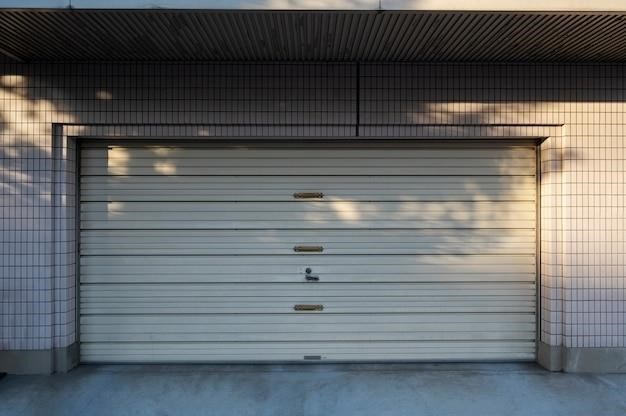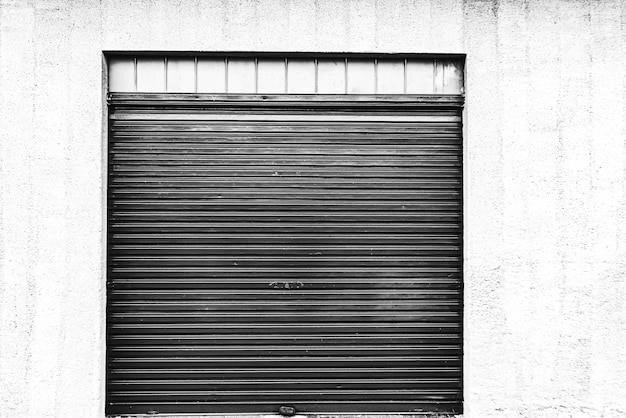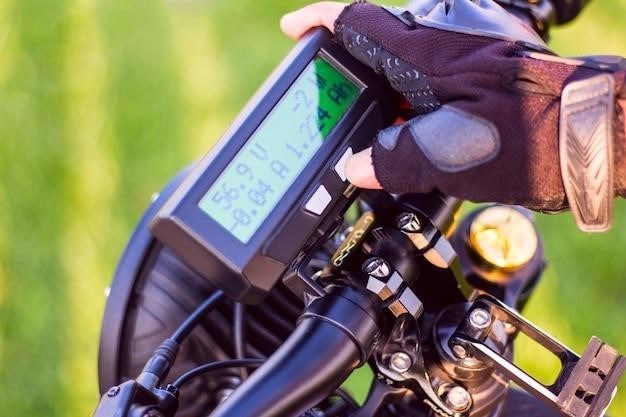
Garage Door Won’t Open Manually⁚ Troubleshooting and Solutions
A garage door that won’t open manually can be a frustrating problem. This issue could be caused by a variety of factors, including a broken spring, a clogged track, or a problem with the opener. This guide will help you troubleshoot and solve this problem so you can get your garage door working again.
Identifying the Problem
Before diving into troubleshooting, it’s crucial to identify the root cause of the problem. Ask yourself these questions⁚
- Is the garage door completely stuck, or can it be moved a bit? A stuck door might indicate a problem with the tracks, springs, or a serious obstruction. If it moves slightly, the issue could be a minor obstruction or a problem with the opener.
- Did the door suddenly stop working, or was it gradually getting harder to open? Sudden failure might indicate a broken spring or a severe obstruction. A gradual decline in functionality could be due to worn-out components or a build-up of debris.
- Is there any unusual noise coming from the door or opener? Unusual noises, like grinding, screeching, or clicking, can provide valuable clues about the issue. A grinding noise might indicate worn-out tracks, while a clicking sound could point to a problem with the opener mechanism.
- Did the door open normally the last time it was used? This can help determine if the issue is a recent development or a long-standing problem.
Understanding the nature of the problem will help you narrow down the potential causes and make the troubleshooting process more efficient.
Checking the Manual Release Mechanism
The manual release mechanism is a safety feature that allows you to disconnect the garage door from the opener, enabling you to manually lift the door in case of power outages or opener malfunctions. Here’s how to check it⁚
- Locate the Manual Release Cord⁚ This is typically a red cord hanging from the garage door opener. It might be located on the side of the opener unit, near the motor.
- Pull the Cord⁚ If you can reach the cord, pull it down to disengage the door from the opener. You should hear a clicking sound as the release mechanism engages. This will allow you to manually lift the door.
- Lift the Door⁚ With the manual release engaged, try lifting the door manually. If the door lifts easily, you’ve successfully disengaged the opener and the problem might be related to the opener itself.
- Reconnect the Opener⁚ Once you’ve finished lifting the door, you’ll need to reconnect the opener. To do this, simply pull the release cord back up until it clicks into place. This will re-engage the opener with the door.
If the door still won’t open manually after checking the manual release mechanism, you’ll need to move on to other troubleshooting steps.
Inspecting the Garage Door Tracks
The tracks that guide the garage door are crucial for its smooth operation. Any damage, misalignment, or obstructions in these tracks can prevent the door from opening or closing properly. Here’s how to inspect the tracks⁚
- Check for Obstructions⁚ Look for anything that might be blocking the track, such as leaves, debris, or even small toys. Remove any obstructions you find.
- Inspect for Damage⁚ Examine the tracks for dents, bends, or other damage. Over time, continually opening your garage door with misaligned or damaged tracks can make the problem worse.
- Check for Alignment⁚ Ensure the tracks are properly aligned. If they are bent or misaligned, the door will not move smoothly. You can use a level to check the alignment of the tracks.
- Tighten Loose Screws⁚ If you find any loose screws in the tracks, tighten them up. Loose screws can cause the tracks to become misaligned.

If you find any damage to the tracks, you may need to repair or replace them. You can try to gently bend the track back into shape with a hammer or mallet, but it is recommended to consult a professional if the damage is severe.
Assessing the Garage Door Springs
Garage door springs are essential for lifting and balancing the heavy door. If they are broken or worn out, the door will be difficult to open manually. Inspecting the springs requires caution, as they are under high tension and can be dangerous if handled improperly. It’s highly recommended to contact a professional for spring-related issues.
Here’s a general overview of what to look for⁚
- Check for Broken Springs⁚ Look for any visible breaks or cracks in the spring coils. If you see any, it’s a clear indication that the spring is broken and needs replacement.
- Observe Spring Tension⁚ If the springs are still intact, observe their tension. If they seem excessively stretched or loose, this could indicate a problem with the spring’s ability to balance the door properly.
- Examine the Spring Attachment Points⁚ Inspect the points where the springs are attached to the garage door and the frame. Look for any signs of rust, wear, or loose connections, which could indicate potential problems.
If you suspect a problem with the springs, it’s best to avoid attempting any repairs yourself. Garage door springs are under extreme pressure and can cause serious injury if not handled properly. Contact a qualified garage door technician for inspection, repair, or replacement of the springs.
Troubleshooting the Garage Door Opener
If your garage door won’t open manually, the problem could lie with the garage door opener itself. While a manual release mechanism allows you to lift the door independently, the opener might be preventing the door from moving freely. Here are some steps to troubleshoot the opener⁚
- Check the Power Supply⁚ Ensure that the opener is receiving power. Check the circuit breaker and make sure it’s not tripped. Also, verify that the outlet is working by plugging in another device.
- Inspect the Opener’s Motor⁚ Listen for any unusual noises coming from the opener’s motor. A grinding or humming sound could indicate a motor problem.
- Examine the Trolley⁚ The trolley is the part of the opener that connects to the garage door. Inspect it for any signs of damage or misalignment. If the trolley is disconnected or stuck, it will prevent the door from opening.
- Check the Limit Switches⁚ Limit switches control the travel of the garage door. Inspect them for any dirt, debris, or damage that could be interfering with their function.
- Test the Remote Control⁚ Make sure the remote control is working properly by testing it with other devices if available. Replace the batteries if necessary.
If you suspect a problem with the opener’s motor, wiring, or other internal components, it’s advisable to consult a professional garage door technician for repair or replacement.
Addressing Obstructions and Clogs
Even if your garage door opener is functioning correctly and the manual release mechanism is engaged, obstructions or clogs in the tracks can prevent the door from opening. These issues can arise from various sources, including⁚
- Accumulated Debris⁚ Over time, leaves, dirt, and other debris can accumulate in the tracks, hindering the smooth movement of the door.
- Bent or Misaligned Tracks⁚ If the tracks are bent or misaligned, they can prevent the door from moving freely. This could be caused by impact, age, or improper installation.
- Frozen Tracks⁚ In cold climates, ice and snow can accumulate on the tracks, creating a frozen barrier that prevents the door from opening.
- Foreign Objects⁚ Items such as toys, tools, or even small animals can become lodged in the tracks, obstructing the door’s movement.
To address these issues, follow these steps⁚
- Clean the Tracks⁚ Use a brush or vacuum to remove any debris from the tracks. For frozen tracks, use a de-icing spray or warm water to melt the ice.
- Inspect for Bent or Misaligned Tracks⁚ Check the tracks for any bends or misalignments. If you find any, you may be able to straighten them with a hammer or mallet. However, for significant damage, professional repair is recommended.
- Remove Obstructions⁚ Carefully remove any foreign objects from the tracks. Use a tool or your hand to gently dislodge the object, ensuring you do not damage the tracks or door.
Once the tracks are clear, try lifting the door manually again. If it still won’t open, move on to the next troubleshooting step.
Seeking Professional Help
If you’ve exhausted all the troubleshooting steps and your garage door still won’t open manually, it’s time to call a professional garage door technician. Here are some situations where professional help is crucial⁚
- Broken Springs⁚ Garage door springs are under high tension and can be extremely dangerous to handle. If you suspect a broken spring, it’s essential to call a professional immediately to avoid potential injury.
- Damaged Tracks⁚ Significant damage to the tracks, such as severe bends or cracks, requires professional repair. Attempting to fix these issues yourself could lead to further damage or injury.
- Electrical Issues⁚ If you suspect electrical problems with the opener, such as a faulty motor or wiring, it’s best to leave it to a qualified electrician.
- Safety Concerns⁚ If you’re uncomfortable working with your garage door or feel unsure about the cause of the problem, it’s always best to err on the side of caution and seek professional help.
A professional garage door technician can diagnose the problem accurately, provide safe and effective repairs, and ensure that your door is working properly. They have the expertise, tools, and experience to handle any garage door issue, no matter how complex.
Remember, a malfunctioning garage door can be a safety hazard. Seeking professional help when necessary ensures your safety and protects your investment in your garage door.
Safety Precautions
Working with a garage door, even manually, requires a certain level of caution to avoid potential injuries. Here are some safety precautions to keep in mind⁚
- Never attempt to lift a garage door if you suspect a broken spring. Broken springs are under extreme tension and can release suddenly, causing serious injury. Always call a professional in this situation.
- Always use proper lifting techniques. When lifting a garage door manually, use your legs, not your back, to avoid strain. Avoid twisting or bending your body while lifting.
- Wear appropriate footwear. Make sure you’re wearing sturdy shoes with good grip to prevent slips and falls.
- Be aware of your surroundings. Ensure that the area around the garage door is clear of obstacles and that there’s sufficient space to move safely.
- Use a ladder cautiously. If you need to reach high areas of the door, use a sturdy ladder and follow all safety guidelines.
- Never attempt to repair or adjust the garage door opener without disconnecting power. Electricity can be dangerous, and it’s essential to disconnect the power source before working on any electrical components.
Safety should always be your top priority when working with a garage door. By following these precautions, you can minimize the risk of accidents and ensure that your repairs are done safely and effectively.
Preventing Future Issues
While a garage door that won’t open manually can be a frustrating experience, there are steps you can take to minimize the chances of encountering this problem again. Regular maintenance and attention to detail can go a long way in ensuring smooth operation and extending the life of your garage door.
- Inspect the tracks regularly. Check for any signs of wear, misalignment, or debris buildup. Clean the tracks thoroughly and use a lubricant to keep them moving smoothly.
- Lubricate the hinges, rollers, and springs. Regular lubrication helps prevent friction and wear, contributing to a longer lifespan for your garage door components. Consult the owner’s manual for recommended lubrication types and frequency.
- Check the balance of the door. A properly balanced garage door will open and close smoothly without strain. If you notice any imbalance, seek professional assistance to ensure the door is adjusted correctly.
- Inspect the springs annually. Garage door springs are under tremendous stress and can break unexpectedly. Have a professional inspect them annually to ensure they are in good condition and replace them if necessary.
- Keep the garage door clean. Regularly removing dust, dirt, and debris from the door and surrounding area can prevent buildup that may hinder smooth operation.
- Avoid overloading the door. Overloading the garage door with heavy items can put extra strain on the components, leading to premature wear and tear. Distribute weight evenly and avoid exceeding the door’s weight limit.
By following these preventive measures, you can help ensure that your garage door continues to function reliably and safely for years to come.




